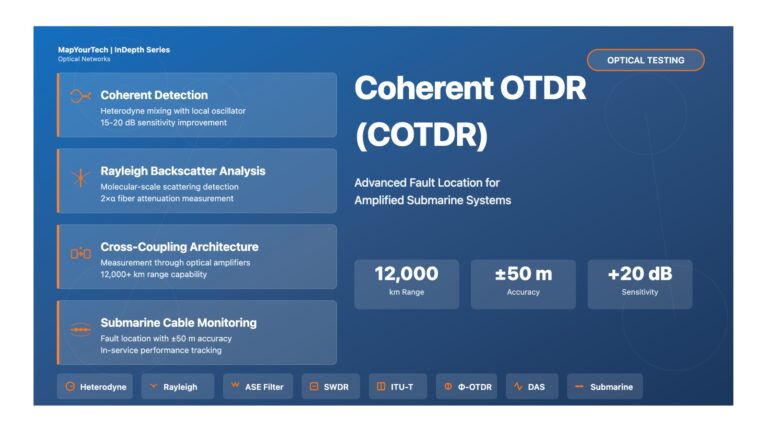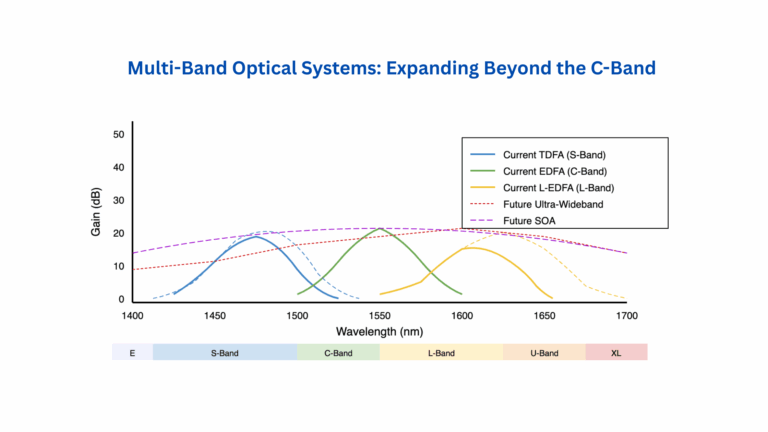HomePosts tagged “Optical network”
Optical network
Showing 1 - 10 of 20 results
Gain Equalizing Filters (GEF) – Comprehensive Visual Guide | MapYourTech Overview of Gain Equalizing Filters (GEF) Comprehensive Technical Guide for...
-
Free
-
November 30, 2025
Coherent Optical Time Domain Reflectometry (COTDR) – Comprehensive Visual Guide Coherent Optical Time Domain Reflectometry (COTDR) Technical Guide for Optical...
-
Free
-
November 29, 2025
Methods to Pump More Bits in Less Spectrum in Optical Fiber Methods to Pump More Bits in Less Spectrum in...
-
Free
-
November 19, 2025
Membership Required You must be a member to access this content. View Membership Levels Already a member? Log in here......
-
Free
-
May 8, 2025
Syslog is one of the most widely used protocols for logging system events, providing network and optical device administrators with...
-
Free
-
March 26, 2025
A Digital Twin Network (DTN) is a virtual representation of a physical network, providing real-time analysis, diagnosis, and control of...
-
Free
-
March 26, 2025
Here we will discuss what are the advantages of OTN(Optical Transport Network) over SDH/SONET. The OTN architecture concept was developed...
-
Free
-
March 26, 2025
The maintenance signals defined in [ITU-T G.709] provide network connection status information in the form of payload missing indication (PMI), backward...
-
Free
-
March 26, 2025
The Optical Time Domain Reflectometer (OTDR) is useful for testing the integrity of fiber optic cables. An optical time-domain reflectometer (OTDR)...
-
Free
-
March 26, 2025
Understanding Q-Factor in Optical Communications Understanding Q-Factor in Optical Communications Signal Quality Metrics and BER Relationship What is Q-Factor? Q...
-
Free
-
March 26, 2025
Explore Articles
Filter Articles
ResetExplore Courses
Tags
automation
ber
Chromatic Dispersion
coherent optical transmission
Data transmission
DWDM
edfa
EDFAs
Erbium-Doped Fiber Amplifiers
fec
Fiber optics
Fiber optic technology
Forward Error Correction
Latency
modulation
network automation
network management
Network performance
noise figure
optical
optical amplifiers
optical automation
Optical communication
Optical fiber
Optical network
optical networking
Optical networks
Optical performance
Optical signal-to-noise ratio
Optical transmission
Optical transport network
OSNR
OTN
Q-factor
Raman Amplifier
SDH
Signal amplification
Signal integrity
Signal quality
Slider
submarine
submarine communication
submarine optical networking
Telecommunications
Ticker









